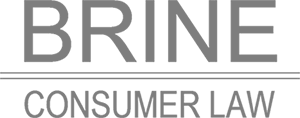Many people who consider filing a bankruptcy to help them get out of debt when they can no longer afford to pay their bills do not understand the differences between Chapter 7 and 13 bankruptcies. These two types of bankruptcies are the ones most commonly filed by individuals. While both can stop creditor’s actions and help a person get a fresh financial start, they are very different in many ways. If you are thinking of filing a bankruptcy, it is important to understand the key distinctions between these types of bankruptcies, so that you file the bankruptcy that is right for your financial situation.
What Is a Chapter 7 Bankruptcy?
A Chapter 7 bankruptcy is a liquidation bankruptcy to eliminate many debts, such as credit card bills, personal loans, and medical bills. Certain debts like child support, alimony, tax debts, and student loans cannot be discharged in a Chapter 7 bankruptcy. To qualify, a debtor must not have much disposable monthly income after paying his basic expenses, such as a mortgage or rent, car loan payment, utilities, and food. He must also satisfy a “means test” that compares his monthly income over the last prior six months to the median income of a household of his size in his state. If the person’s income is below the median income set by the means test, he may qualify for a Chapter 7 bankruptcy.
A Chapter 7 bankruptcy is a relatively quick bankruptcy that is completed within four to six months. It can allow a person to keep his home and vehicles as long as he is current on the loan payments and certain other property. At the end of the bankruptcy, he will no longer owe the debts being discharged.
What Is a Chapter 13 Bankruptcy?
A Chapter 13 bankruptcy is a reorganization bankruptcy where the person pays back all or part of his debts. It can be filed to stop a mortgage foreclosure or repossession of a vehicle if a person can catch up his missed payments and pay his current payments over a three- to five-year period. It is also filed to eliminate a second mortgage, when a person does not pass the means test, or if he has valuable property that he wants to keep but would have to surrender in a Chapter 7 bankruptcy. As with a Chapter 7 bankruptcy, student loans, child support, taxes, and alimony cannot be discharged.
In a Chapter 13 bankruptcy, the person would pay a monthly payment to a Chapter 13 trustee, who is appointed to use these payments to pay his debts, according to a Chapter 13 plan that the person prepares and files. This Chapter 13 plan details his plans to catch up any missed mortgage or auto loan payments and otherwise pay his debts. A person is generally in a Chapter 13 bankruptcy for three to five years. If he successfully completes his Chapter 13 bankruptcy, his remaining unsecured debts, such as credit cards and personal loans, would be discharged and he would no longer owe them.
What Are Some Key Differences Between a Chapter 7 and Chapter 13 Bankruptcy?
There are many differences in a Chapter 7 and Chapter 13 bankruptcy that could impact on your decision as to which one is right for you or could determine which you are eligible to file. Important ways these bankruptcies differ include:
- Type of bankruptcy. A Chapter 7 bankruptcy is a debt elimination bankruptcy, while a Chapter 13 bankruptcy is a reorganization bankruptcy to help a debtor pay back some or all of his debt.
- Who can file. Individuals and businesses can file a Chapter 7 bankruptcy, but only individuals can file a Chapter 13 bankruptcy.
- Means test. Individuals must pass the means test in order to qualify for a Chapter 7 bankruptcy. Individuals do not have to pass this test to file a Chapter 13 bankruptcy. However, if they fail the means test, they must remain in their Chapter 13 bankruptcy for five years.
- Amount of debt allowed. In a Chapter 13 bankruptcy, but not a Chapter 7 bankruptcy, a person can only have a certain amount of debt. Currently, a person can only have $394,725 in unsecured debt—like credit cards—and $1,184,200 in secured debts, such as mortgages and vehicle loans.
- Time until discharge. A person can receive an Order of Discharge within four to six months after filing a Chapter 7 bankruptcy, but not until three to five years if he files a Chapter 13 bankruptcy.
- Treatment of property. In a Chapter 7 bankruptcy, the Chapter 7 trustee would sell any property to pay creditors that the person cannot exempt and keep in the bankruptcy. A person filing a Chapter 13 bankruptcy could keep all of his property as long as he pays unsecured creditors what they would receive in a Chapter 7 bankruptcy.
- Benefits. A person can quickly eliminate debt and get a fresh start in a Chapter 7 bankruptcy. A Chapter 13 bankruptcy can allow a person to catch up his mortgage, vehicle loans, and other debts that are not dischargeable and keep his property by making monthly payments for three to five years.
Are you considering filing for bankruptcy? You need an experienced bankruptcy attorney who can evaluate your complete financial situation to determine whether a Chapter 7 or Chapter 13 bankruptcy, or a non-bankruptcy option will help you the most. To discuss your financial situation and legal options, call Brine Consumer Law to schedule a free consultation.

